The wah-wah pedal is one of the most used effects not only with the electric guitar but also by other instruments, it is known for its unmistakable “crying” or “talking” sound. This effect originated in the 60s and has an interesting history behind it. Let’s go through it together.
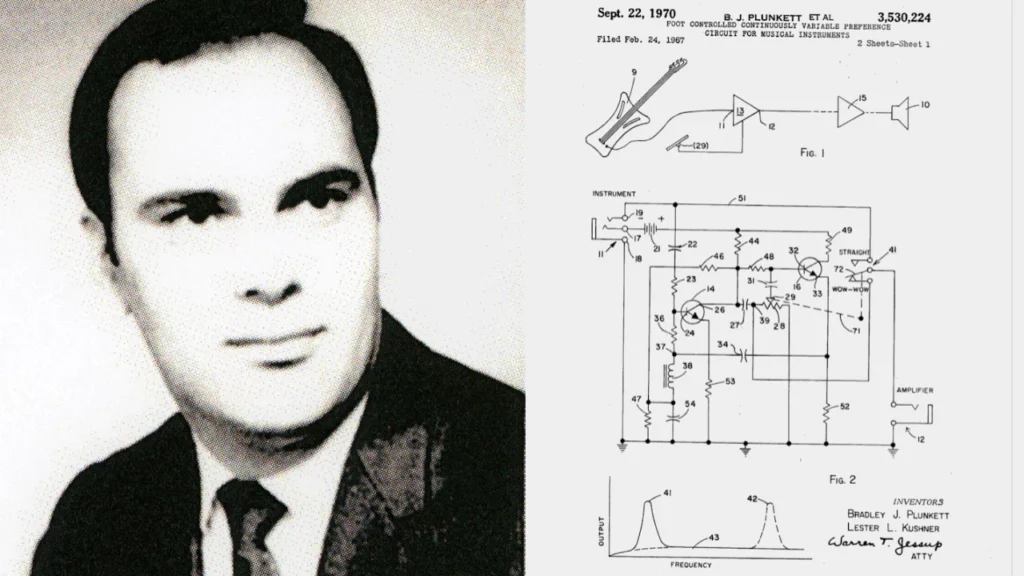
THE BIRTH of the First Wah-Wah
Brad Plunkett: The creation of the first wah-wah pedal is commonly credited to an engineer at the Thomas Organ Company, Brad Plunkett, in 1966. The company was the U.S. distributor of Vox amplifiers, famous for being used by the Beatles and other British bands.
The Circuit: Brad Plunkett, while working to reduce the production costs of Vox amplifiers, came across the distinctive sound of the wah-wah when he substituted a pedal potentiometer for the tone circuit. During this process, and quite casually, he noticed that moving the pedal that controlled the tone quickly produced that characteristic sound.
The Test: After mounting the circuit on a pedal to control it with their foot, Plunkett and his colleagues immediately recognized the potential of the invention. Guitarist Del Casher was among the first to experiment with the new device, exploring its possibilities and helping to define the sound we associate with wah-wah today.
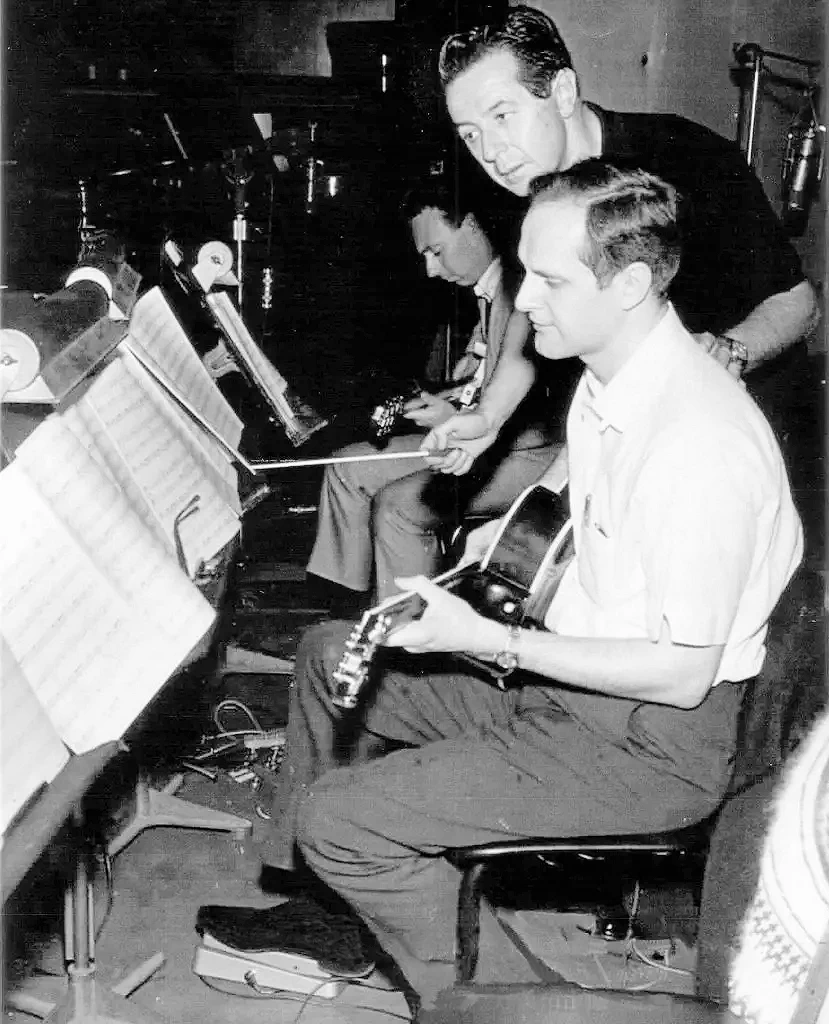
Prototype and Names
Prototypes: Early prototypes of the wah-wah pedal were often crude and rudimentary, but they gave a clear demonstration of what the device could do.
Nomenclature: Although the pedal was initially marketed as the “Clyde McCoy Wah-Wah”, Clyde McCoy had little to do with the development of the pedal other than being a figure associated with the “wah-wah” style achieved with the mute of the trumpet.
Market Introduction
Casher and Hendrix: Del Casher and Jimi Hendrix were instrumental in the introduction and popularity of the pedal in the mass music market.
Extended Usage: Other rock stars, such as Eric Clapton and Jimmy Page, began to adopt wah-wah in their performances and recordings.
Cultural Impact
Music Genres: Although closely associated with psychedelic rock and the music of the 60s and 70s, wah-wah has found a home in a variety of musical genres, including funk, disco, and jazz.
The Sound of Protest: The wah-wah pedal also became synonymous with a certain kind of expressiveness and protest during the turbulent period of the late ’60s and early ’70s.
Technology & Design
Technology: The genius of the wah-wah lies in its ability to modulate the sound thanks to a band-pass filter circuit. The inductor, potentiometers, and transistors play critical roles in shaping the sound, while the physical pedal allows players to dynamically modulate the tone as they play.
Design: While the original design of the wah-wah has remained rather consistent over time, there have been variations and innovations, with different manufacturers offering versions with unique features or basic sound modifications.
Basics
Bandpass Filter:
- At the heart of the wah-wah is a bandpass filter, which allows you to pass only frequencies in a certain range and attenuate those outside of it.
- Filter Control:
- The pedal controls the position of the filter’s resonance peak, shifting the frequency range that is emphasized while the others are attenuated.
Key Components
- Inductor:
- The inductor is a key element in the wah-wah circuit, responsible for creating the characteristic filter peak.
- Potentiometer:
- The potentiometer (pot) attached to the physical pedal controls the frequency parameter of the filter, allowing the player to modulate the sound by moving the foot.
- Capacitors and Resistors:
- Capacitors and resistors determine the shape and width of the filter’s bandwidth, influencing the character of the sound produced.
- Transistor:
- Transistors (in older models or models that recreate a vintage sound) also affect the sonic character of the pedal, contributing to its tone and response.
Circuit Implementation
- Input and Output:
- The signal from the guitar (or other instrument) enters the pedal circuit, passes through the filtering circuit, and then exits modified toward the amplifier.
- Pedal Movement:
- The physical movement of the pedal alters the resistance of the potentiometer, moving the filter peak up and down the frequency spectrum.
- Sound Emission:
- When the peak of the filter moves, it changes the frequencies that are emphasized, creating the characteristic “wah” effect.
Physical Construction
- The durability and build quality of the pedal are essential, given the physical nature of its use.
- The sensitivity and travel of the pedal itself are crucial factors that affect the response and usability of the device.
Despite the relative simplicity of its circuitry, the wah-wah pedal remains one of the most expressive effects available to guitarists, offering direct physical control over the tone of the musical moment.
The world of wah-wah has seen many versions and models over the years, but some pedals have gained particular notoriety, both for their unique sound and for use by influential musicians. Here are some of the most famous and historic wah-wah pedals:
Vox V846
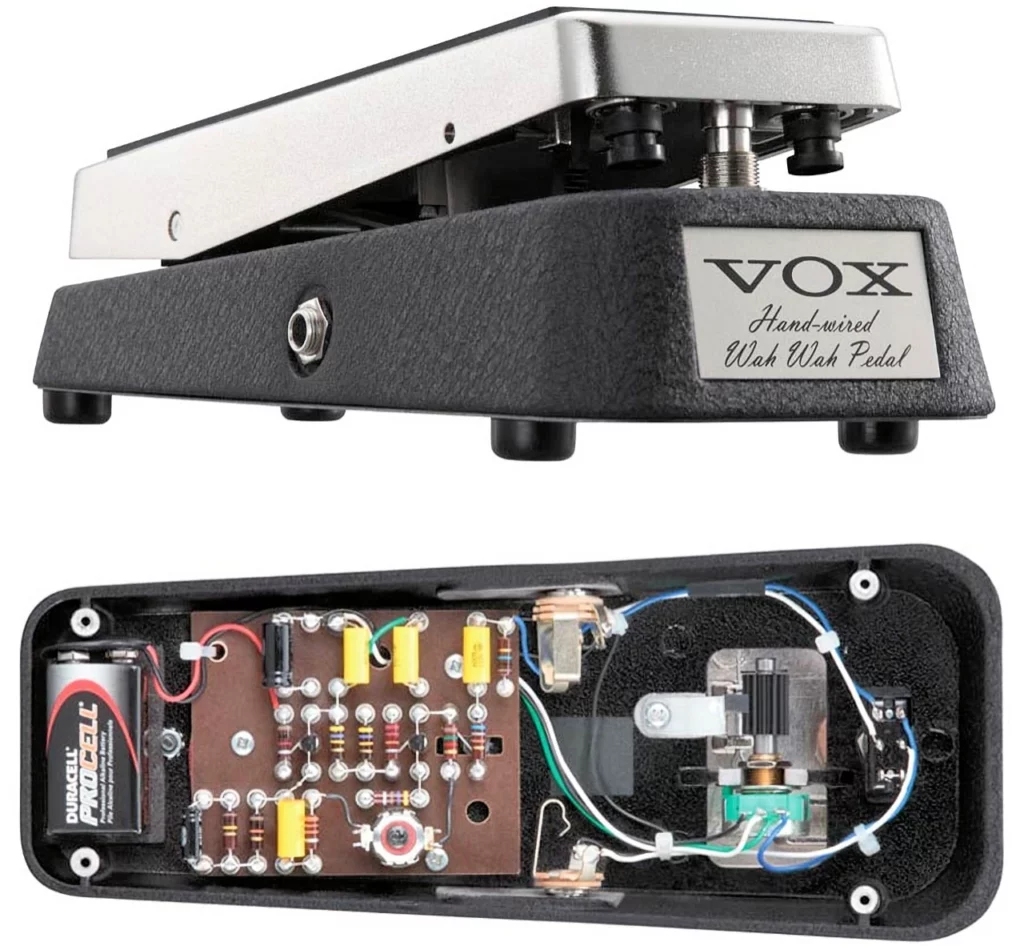
- Features: Considered by many to be the “first” wah-wah, despite the fact that there have been previous iterations.
- Known Users: Jimi Hendrix, Eric Clapton.
Dunlop Cry Baby GCB-95
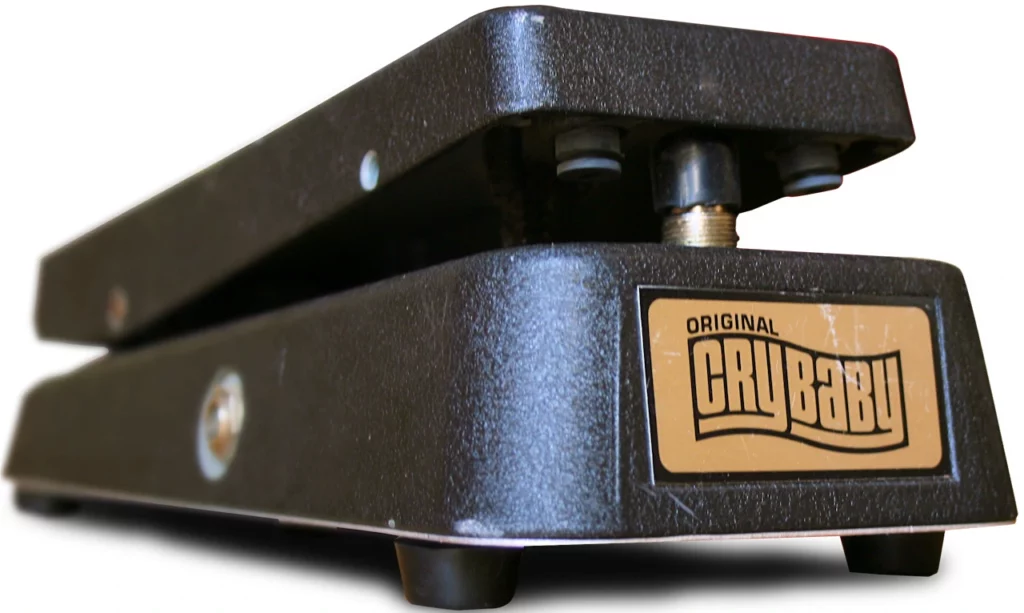
- Features: Perhaps the most well-known wah-wah pedal, loved for its distinctive tone and robust construction.
- Known Users: Jimi Hendrix, Slash, David Gilmour.
Vox Clyde McCoy Wah
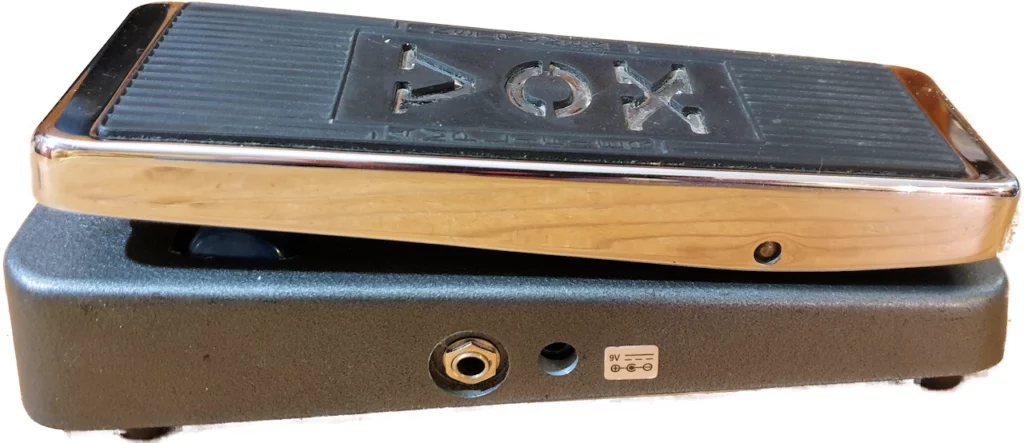
- Features: Named after jazz trumpeter Clyde McCoy and known for his vowel and warm sound.
- Known users: Eric Clapton during his time with Cream.
Morley Power Wah
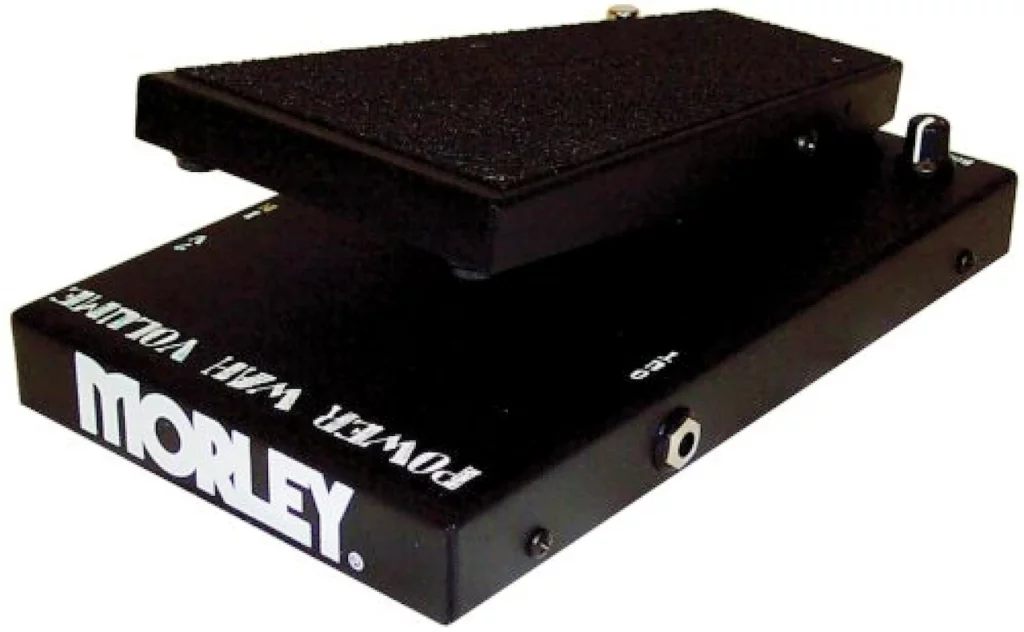
- Features: Use optics to control the wah effect, which means less mechanical wear and a different response underfoot.
- Known users: Steve Vai, Mark Tremonti.
Ibanez WH10
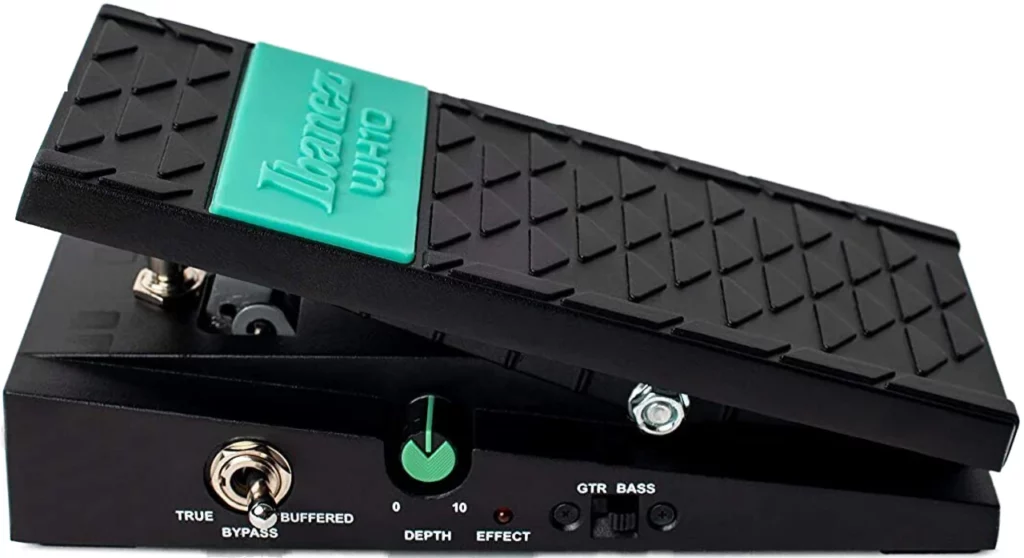
- Features: Wah pedal with a distinctive sound and a touch activation switch.
- Known users: John Frusciante of the Red Hot Chili Peppers.
Dunlop Cry Baby 535Q
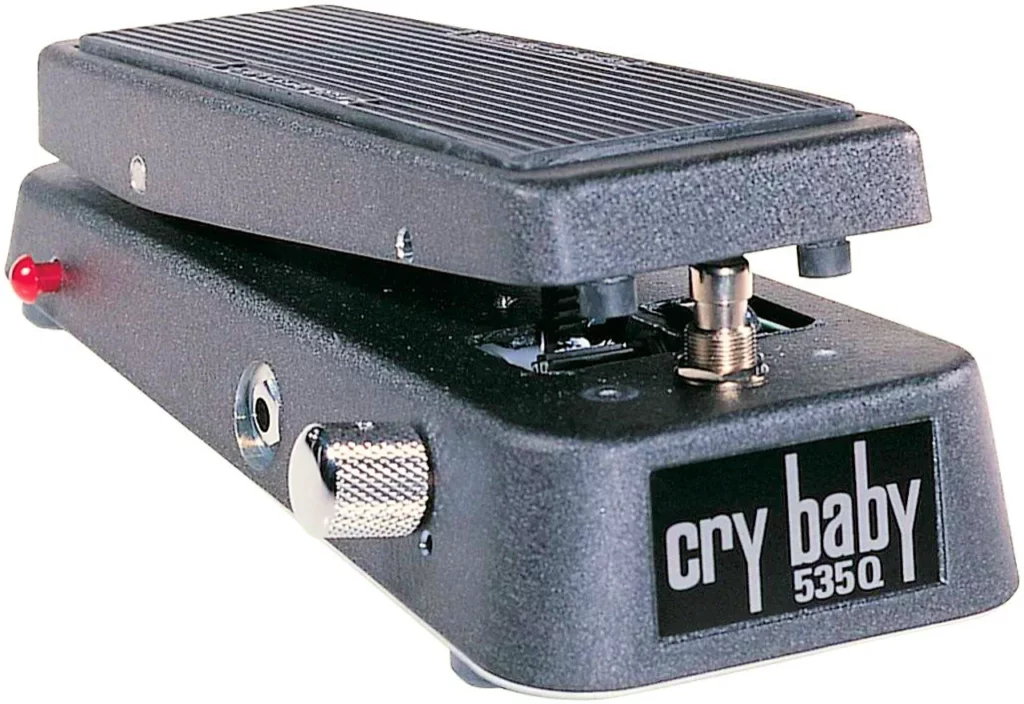
- Features: It gives you more control over the shape and character of your wah sound, with an adjustable frequency range and additional volume control.
- Known users: Eric Clapton, Buddy Guy.
Fulltone Clyde Wah
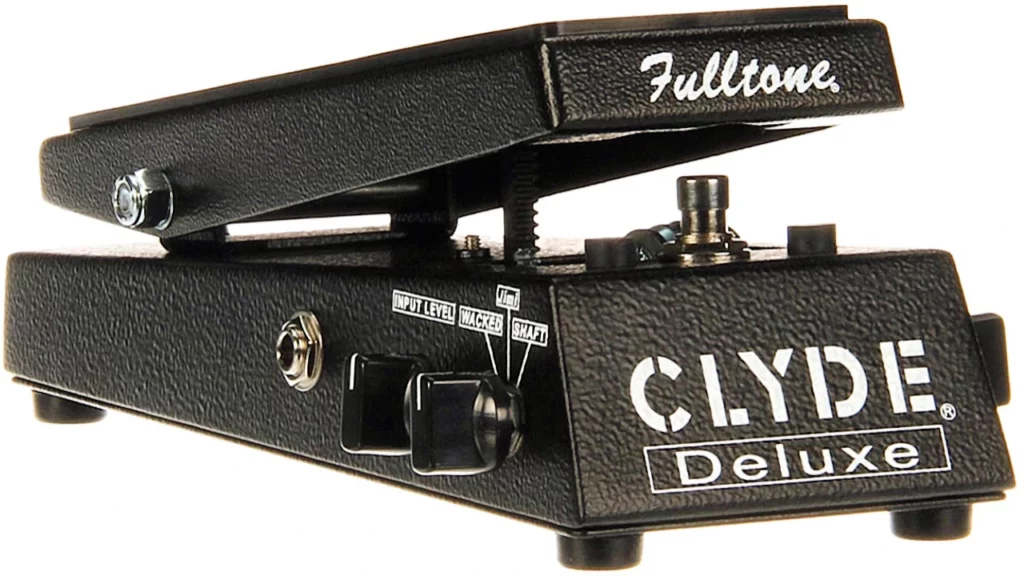
- Features: Named after Clyde McCoy as the Vox model, it aims to offer an improved and more versatile version of the classic wah sound.
- Known users: Robin Trower, Steve Lukather.
- Versions: Also presented in the Deluxe version
Dunlop Dimebag Cry Baby From Hell DB01
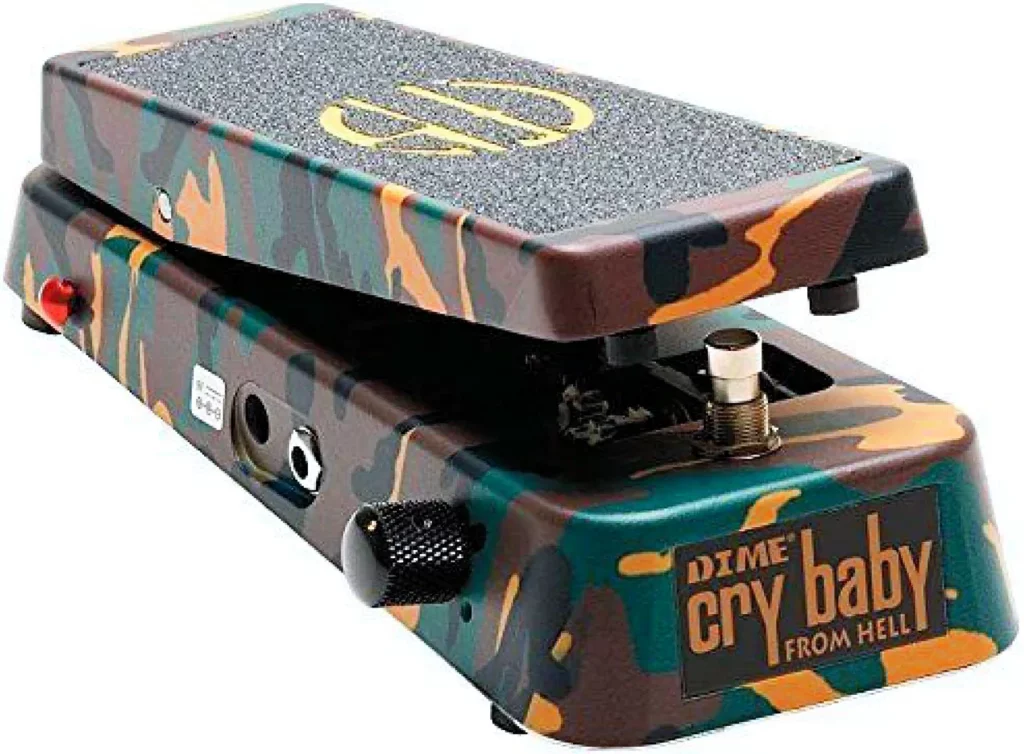
- Features: Designed in collaboration with Pantera’s Dimebag Darrell, it has a wider frequency range and volume boost.
- Known users: Dimebag Darrell.
Boss PW-10 V-Wah
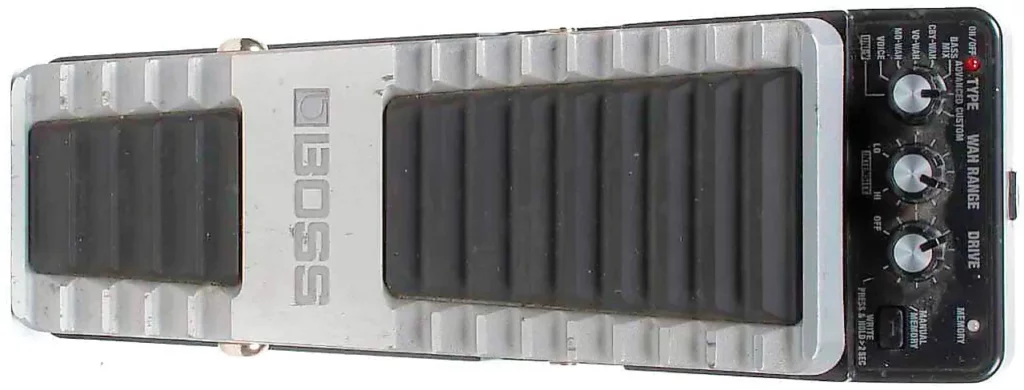
- Features: A digital wah pedal that offers a range of different wah patterns and other controls to shape your sound.
- Known users: Various uses in the study setting.
Electro-Harmonix Crying Tone
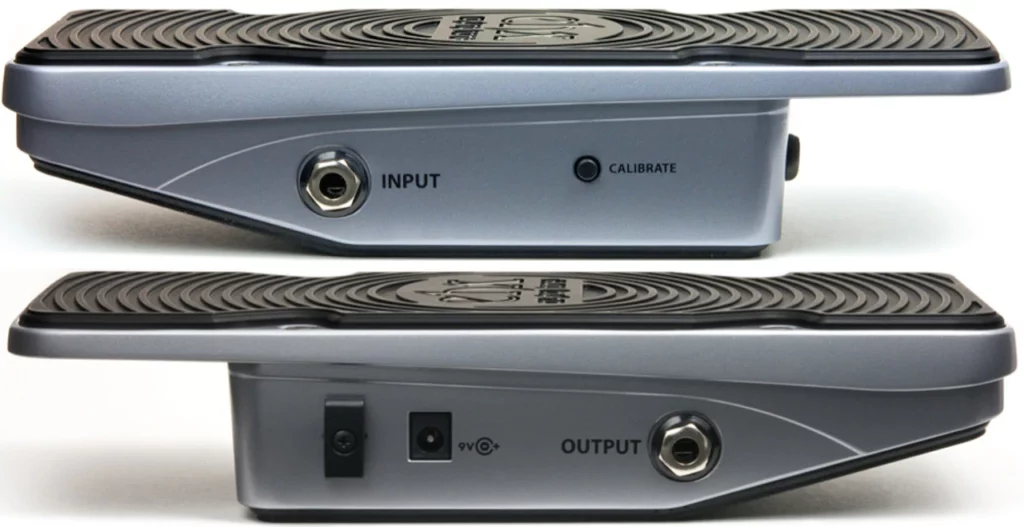
- Features: A wah with no moving parts, using a slanted design and sensors to control the effect.
- Known Users: Various artists due to its particular characteristics.
Each of these wah pedals has its own peculiarities, influencing the sound differently and providing a different “feel” under the guitarist’s foot. Many musicians often possess different types of wah-wah to explore different tonal colorations in their musical projects.
FINAL THOUGHTS
Del Casher, also known as Del Kacher, is a key figure in the history of the wah-wah pedal. Guitarist and inventor, Casher played a significant role in the development and popularization of this iconic guitar effect.
Contributions and Engagements
- Initial Development:
- Del Casher worked closely with Vox in the 60s, contributing to the development of the wah-wah pedal.
- Although his name is not as well known to the general public as some famous users of the pedal, his role behind the scenes has been crucial.
- Project Improvement:
- Del Casher was among the first to show the expressive potential of wah-wah, using it in many recordings and performances.
- He created demonstrations for Vox, showing how wah-wah could be used with various instruments and in different musical contexts.
- Composition and Recording:
- He has used the pedal in several soundtrack recordings and advertising jingles, experimenting with the pedal’s abilities to create new sounds and timbres.
- His recordings helped show the world how wah-wah could be used creatively in pop, rock, and other genres.
Innovations and Creations
- Multifunctionality:
- Del Casher emphasized how the wah-wah could be a multifunctional effect, not only for the electric guitar but also for other instruments, including organ and trumpet.
- Movie Links:
- He explored the potential of wah-wah in film soundtracks, helping to establish the sound of wah-wah as an integral part of the soundscape of certain films of the 60s and 70s.
Inheritance and Influence
Despite the dispute over who should actually be credited with inventing the wah-wah pedal (Brad Plunkett is often cited as the lead inventor), Del Casher remains a central figure in its early development and popularization. His ability to see beyond the obvious and imagine new contexts and applications for the pedal has helped it emerge as one of the most loved and used effects in modern music. His passion and exploratory curiosity have influenced not only the world of wah-wah, but have also given a significant impetus to the evolution of guitar effects as a whole.
Do you like technology applied to the world of music? There is a dedicated section here on the site!
And don’t forget to check out my YouTube channel too!

 it_IT
it_IT